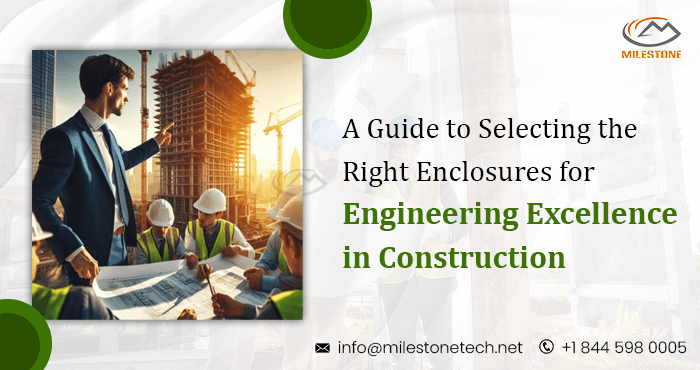A Guide to Selecting the Right Enclosures for Engineering Excellence in Construction
[edit] Introducing enclosures
In the ever-evolving landscape of construction and engineering, the importance of selecting the right enclosures cannot be overstated. Enclosures play a crucial role in ensuring the longevity, functionality, and safety of various engineering solutions in construction projects. As technology continues to advance, the options for enclosures have expanded, making the selection process more intricate. This guide aims to provide insights into the key factors to consider when choosing enclosures for engineering excellence in construction.
[edit] Understanding the Purpose
Before delving into the plethora of enclosure options available, it's essential to clearly understand the purpose of the enclosure. Different engineering solutions require different types of protection. Whether it's electrical components, communication systems, or mechanical equipment, the right enclosure should align with the specific needs of the application.
[edit] Environmental Considerations
Construction sites can be harsh environments with exposure to dust, moisture, extreme temperatures, and other challenging conditions. The selected enclosure must be able to withstand these environmental factors to ensure the longevity of the enclosed components. For example, in areas prone to heavy rainfall, waterproof and corrosion-resistant enclosures become imperative.
[edit] Material Selection
The material of the enclosure plays a pivotal role in its durability and functionality. Enclosures are commonly made from materials such as stainless steel, aluminium, plastic, or fibreglass. Each material has its own set of advantages and disadvantages. Stainless steel offers excellent corrosion resistance, while fibreglass provides insulation against electromagnetic interference. The choice of material should align with the environmental conditions and the specific requirements of the engineering components.
[edit] Size and Space Considerations
Selecting the right size of the enclosure is crucial to accommodate the engineering components comfortably. Additionally, considering future expansions or modifications is essential to avoid the need for frequent replacements. Engineers should assess the available space and choose enclosures that fit seamlessly into the construction project's layout.
[edit] Security and Accessibility
Security is a paramount concern when it comes to engineering solutions in construction. Enclosures should not only protect components from external threats but also provide controlled access for maintenance and repairs. Lockable enclosures and well-designed access points contribute to the overall security of the enclosed systems.
[edit] Compliance with Industry Standards
Construction and engineering projects are subject to various industry standards and regulations. Ensuring that the selected enclosures comply with these standards is crucial for meeting legal requirements and ensuring the safety and reliability of the overall system. Consultation with regulatory bodies and adherence to industry-specific certifications is recommended during the selection process.
[edit] Integration with Technology and AI Tools
In the realm of engineering and construction, the integration of technology and AI tools is becoming increasingly prevalent. Smart enclosures equipped with sensors, monitoring devices, and remote control capabilities contribute to enhanced efficiency and proactive maintenance. Engineers should explore options that align with the project's technological requirements, enabling a seamless integration of AI tools for monitoring and control.
[edit] Cost-Benefit Analysis
While it's tempting to opt for the most advanced and feature-rich enclosures, a comprehensive cost-benefit analysis is necessary. Consideration of the initial cost, maintenance requirements, and potential long-term savings is vital for making an informed decision. Balancing functionality and cost-effectiveness ensures that the selected enclosures align with the project's budget without compromising on quality.
[edit] Conclusion
In conclusion, selecting the right enclosures for engineering excellence in construction requires a thoughtful and comprehensive approach. Engineers must consider the specific purpose, environmental conditions, material selection, size, security, compliance with industry standards, integration with technology, and cost-benefit analysis. By carefully evaluating these factors, construction projects can ensure the longevity, functionality, and safety of their engineering solutions, ultimately contributing to the overall success of the endeavour.
--Engineering Design & BIM Services
[edit] Related articles on Designing Buildings
BIM Directory
[edit] Building Information Modelling (BIM)
[edit] Information Requirements
Employer's Information Requirements (EIR)
Organisational Information Requirements (OIR)
Asset Information Requirements (AIR)
[edit] Information Models
Project Information Model (PIM)
[edit] Collaborative Practices
Industry Foundation Classes (IFC)








